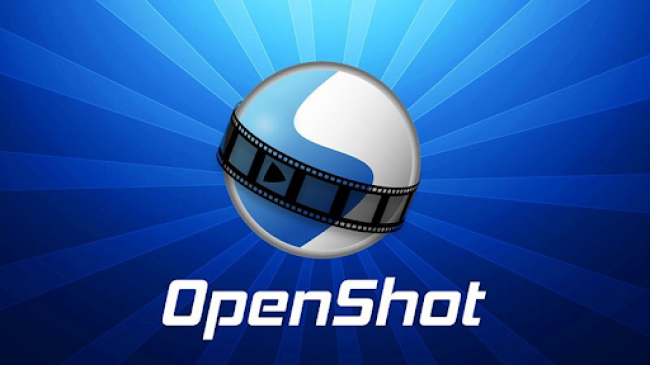This article breaks down the structural elements of a standard video page created on Tella. Instead of focusing on the platform’s marketing narrative, it explores how various configurable settings, like Call-to-Action (CTA) buttons, custom domains, and branding, contribute to the viewer's overall experience. The goal is to provide a neutral and informative view of what Tella offers technically, and how those elements work together to shape a complete video output.
Visual Overview of a Tella Video Page
Each video created and shared via Tella results in a web-based viewer page. This page includes multiple components that are either created directly during the video production process or configured through the platform's settings. A simplified breakdown of these elements includes:
- Video player – displays the content recorded by the user, including screen captures, camera input, or a combination of both.
- Title and description – added during or after the video creation process to offer context for viewers.
- Brand logo – applied from the Branding settings, this appears either above the video or within the header, depending on layout.
- CTA button – an interactive element that guides the viewer to the next step (e.g., scheduling, forms, links).
- Viewer link (custom domain or default) – controls how the URL appears and whether it reflects a branded domain.
- Access permissions – viewer restrictions applied via security settings to control who can watch the video and how.
Video Player and Editing Model
Tella operates through a browser-based interface that requires no software installation. It supports three recording options: screen-only, webcam-only, or a combination of both. Unlike traditional timeline-based editing tools, Tella uses a clip-based editing model. Users record individual segments, which are then arranged sequentially to form the final video. This modular structure allows for faster corrections—if a section needs editing, only that segment can be re-recorded, reducing the need for full retakes. Once finalized, the video is automatically published to a hosted page, with the option to share it via link or embed code. The output is not a downloadable MP4 by default; instead, it is primarily designed for online viewing.
CTA Button: Definition and Role
A call to action (CTA) is a feature available in Tella’s settings that allows users to add a clickable button at the bottom of their shared video pages. The CTA can be linked to any URL, such as a booking calendar, lead capture form, document, or feedback survey. This button becomes visible only on the Tella-hosted video page, not when the video is embedded elsewhere. The CTA button serves a purely functional purpose: it provides the viewer with a guided next step once the video ends. In practical workflows, this might be used to schedule meetings, collect responses, or offer additional resources. CTAs are configured within the Settings > CTA tab, where users can label the button and define its destination URL. Their presence can influence how viewers move forward after watching the content, but they do not impact the core video itself.
_1744015751.png)
Custom Domain: How It Works
Tella provides an option for users to link their domain or subdomain to the video pages they share. This is managed under Settings > Domain. A custom domain allows a video to appear under URLs like watch.companyname.com rather than a default Tella link. This is accomplished through CNAME configuration in the user’s DNS settings, where the custom domain is pointed to Tella’s hosting service. Although the infrastructure remains with Tella, the viewer perceives the video as part of the user’s website or branded environment. From a viewer’s perspective, a familiar domain may provide consistency, credibility, or trust—particularly in client-facing or branded use cases. However, domain configuration requires technical steps such as DNS access and may not be suitable for users unfamiliar with domain management.
Branding: What Elements Can Be Customized
Branding settings in Tella allow users to modify the appearance of their shared video pages to align with organizational or personal identity. These changes do not affect the video content itself but how it is framed on the page. Elements that can be customized include:
- Logo – uploaded and displayed on the video page
- Color scheme – applied to buttons and backgrounds
- Font styles – used in headers and descriptions
- Favicon – small icon displayed in the browser tab
These visual adjustments are made in the Settings > Branding section. Branding plays a functional role for teams that produce multiple videos as part of a consistent communication strategy. It’s worth noting that these elements do not embed within the video file but are shown only on the hosted viewer page.
_1744015719.jpg)
Viewer Access and Security
Security features in Tella are primarily focused on controlling who can access a video once it has been shared. Located in Settings > Security, these controls include:
- Password protection – restricts access to those with a defined password
- Link access control – options to allow public viewing, limited viewers, or invite-only
- Disabling downloads – to prevent content from being saved locally (if applicable)
These settings provide a basic level of privacy and are often used when sharing confidential materials, internal training sessions, or personalized videos with external stakeholders. Importantly, security settings operate at the level of the video page—not at the platform or user level—meaning that each video can be individually configured.
Team & Member Controls
Tella supports team-based access through the Settings > Members section. Here, users can invite colleagues, assign roles (such as admin or editor), and collectively manage resources like branding assets or billing. This is useful in organizations where multiple people are involved in content creation, editing, or distribution. The Members setting enables shared access while maintaining permission boundaries. Billing management, accessible under Settings > Billing, consolidates usage and payment under a central account. These administrative features are especially relevant for teams producing content at scale or with distributed roles.
Summary Table: Feature & Control Mapping
| Page Element | Where It's Managed | Purpose |
| Video Content | Editor Interface | Record and arrange clips |
| CTA Button | Settings > CTA | Add post-view action for viewers |
| Custom Domain | Settings > Domain | Host video under user’s branded URL |
| Branding | Settings > Branding | Apply logos, colors, and fonts |
| Viewer Access | Settings > Security | Set viewing restrictions and passwords |
| Team Management | Settings > Members | Manage user roles and collaborative access |
Observations from User Feedback
Publicly available reviews from platforms like SoftwareAdvice and Efficient.app provide a mix of insights into how users experience Tella. Many users note the simplicity of the interface and the ease of recording short, purpose-driven videos directly in the browser. Some find the modular editing workflow intuitive, especially for asynchronous communication. On the other hand, a few users mention that browser-based recording may depend on device compatibility and network stability. The absence of a timeline editor has also been pointed out as a factor that may not suit users accustomed to frame-level editing. These observations indicate that while the platform meets specific needs, it may not align with all user preferences or workflows.
Conclusion
Tella’s video pages are composed of several adjustable components—each controlled by specific settings within the platform. From branding and domain configuration to security and team roles, each element influences how the final content is presented and experienced. By understanding these structural parts, users can manage their content more effectively without relying on external tools or add-ons. The platform provides a way to control not just what viewers see but how they interact with it.
Post Comment
Be the first to post comment!


